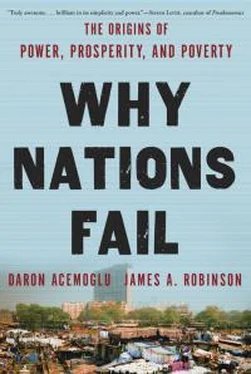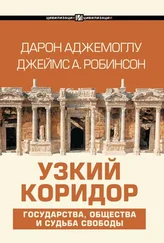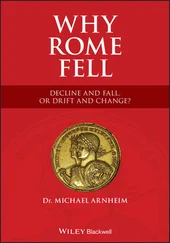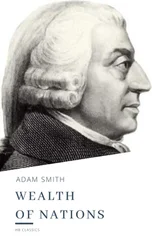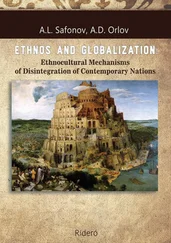We are also grateful to Charles Mann, Leandro Prados de la Escosura, and David Webster for their expert advice.
During much of the process of researching and writing this book we were both members of the Canadian Institute for Advanced Research’s (CIFAR) program on Institutions, Organizations, and Growth. We presented research related to this book many times at CIFAR meetings and have benefited hugely from the support of this wonderful organization and the scholars that it brings together.
We also received comments from literally hundreds of people in various seminars and conferences on the material developed in this book, and we apologize for failing to attribute properly any suggestion, idea, or insight that we got from those presentations and discussions.
We are also very grateful to María Angélica Bautista, Melissa Dell, and Leander Heldring for their superb research assistance on this project.
Last, but certainly not least, we have been very fortunate to have a wonderful, insightful, and extremely supportive editor, John Mahaney. John’s comments and suggestions have greatly improved our book, and his support and enthusiasm for the project made the last year and a half much more pleasant and less taxing than it might have been.
BIBLIOGRAPHICAL ESSAY AND SOURCES
PREFACE
Mohamed ElBaradei’s views can be found at twitter.com/#!/ElBaradei.
Mosaab El Shami and Noha Hamed quotes are from Yahoo! news 2/6/2011, at news.yahoo.com/s/
yblog_exclusive/20110206/ts_yblog_exclusive/
egyptian-voices-from-tahrir-square.
On the twelve immediate demands posted on Wael Khalil’s blog, see alethonews.wordpress.com/2011/02/27/egypt-reviewing-the-demands/.
Reda Metwaly is quoted on Al Jazeera, 2/1/2011, at english.aljazeera.net/news/
middleeast/2011/02/2011212597913527.html.
CHAPTER 1 : So CLOSE AND YET SO DIFFERENT
A good discussion of the Spanish exploration of the Rio de La Plata is Rock (1992), chap. 1. On the discovery and colonization of the Guaraní, see Ganson (2003). The quotations from de Sahagún are from de Sahagún (1975), pp. 47–49. Gibson (1963) is fundamental on the Spanish conquest of Mexico and the institutions they structured. The quotations from de las Casas come from de las Casas (1992), pp. 39, 117–18, and 107, respectively.
On Pizarro in Peru, see Hemming (1983). Chaps. 1–6 cover the meeting at Cajamarca and the march south and the capture of the Inca capital, Cuzco. See Hemming (1983), chap. 20, on de Toledo. Bakewell (1984) gives an overview of the functioning of the Potosí mita , and Dell (2010) provides statistical evidence that shows how it has had persistent effects over time.
The quote from Arthur Young is reproduced from Sheridan (1973), p. 8. There are many good books that describe the early history of Jamestown: for example, Price (2003), and Kupperman (2007). Our treatment is heavily influenced by Morgan (1975) and Galenson (1996). The quote from Anas Todkill comes from p. 38 of Todkill (1885). The quotes from John Smith are from Price (2003), p. 77 (“Victuals …”), p. 93 (“If your king …”), and p. 96 (“When you send …”). The Charter of Maryland, the Fundamental Constitutions of Carolina, and other colonial constitutions have been put on the Internet by Yale University’s Avalon Project, at avalon.law.yale.edu/17th_century.
Bakewell (2009), chap. 14, discusses the independence of Mexico and the constitution. See Stevens (1991) and Knight (2011) on postindependence political instability and presidents. Coatsworth (1978) is the seminal paper on the evidence on economic decline in Mexico after independence. Haber (2010) presents the comparison of the development of banking in Mexico and the United States. Sokoloff (1988) and Sokoloff and Khan (1990) provide evidence on the social background of innovators in the United States who filed patents. See Israel (2000) for a biography of Thomas Edison. Haber, Maurer, and Razo (2003) proposes an interpretation of the political economy of the regime of Porfirio Díaz very much in the spirit of our discussion. Haber, Klein, Maurer, and Middlebrook (2008) extend this treatment of Mexico’s political economy into the twentieth century. On the differential allocation of frontier lands in North and Latin America, see Nugent and Robinson (2010) and García-Jimeno and Robinson (2011). Hu-DeHart (1984) discusses the deportation of the Yaqui people in chap. 6. On the fortune of Carlos Slim and how it was made, see Relea (2007) and Martinez (2002).
Our interpretation of comparative economic development of the Americas builds on our own previous research with Simon Johnson, particularly Acemoglu, Johnson, and Robinson (2001, 2002), and has also been heavily influenced by Coatsworth (1978, 2008) and Engerman and Sokoloff (1997).
CHAPTER 2 : THEORIES THAT DON’T WORK
Jared Diamond’s views on world inequality are laid out in his book Guns, Germs and Steel (1997). Sachs (2006) sets out his own version of geographical determinism. Views about culture are widely spread throughout the academic literature but have never been brought together in one work. Weber (2002) argued that it was the Protestant Reformation that explained why it was Europe that had the Industrial Revolution. Landes (1999) proposed that Northern Europeans developed a unique set of cultural attitudes that led them to work hard, save, and be innovative. Harrison and Huntington, eds. (2000), is a forceful statement of the importance of culture for comparative economic development. The notion that there is some sort of superior British culture or superior set of British institutions is widespread and used to explain U.S. exceptionalism (Fisher, 1989) and also patterns of comparative development more generally (La Porta, Lopez-de-Silanes, and Shleifer, 2008). The works of Banfield (1958) and Putnam, Leonardi, and Nanetti (1994) are very influential cultural interpretations of how one aspect of culture, or “social capital,” as they call it, makes the south of Italy poor. For a survey of how economists use notions of culture, see Guiso, Sapienza, and Zingales (2006). Tabellini (2010) examines the correlation between the extent to which people trust each other in Western Europe and levels of annual income per capita. Nunn and Wantchekon (2010) show how the lack of trust and social capital in Africa is correlated with the historical intensity of the slave trade.
The relevant history of the Kongo is presented in Hilton (1985) and Thornton (1983). On the historical backwardness of African technology, see the works of Goody (1971), Law (1980), and Austen and Headrick (1983).
The definition of economics proposed by Robbins is from Robbins (1935), p. 16.
The quote from Abba Lerner is in Lerner (1972), p. 259. The idea that ignorance explains comparative development is implicit in most economic analyses of economic development and policy reform: for example, Williamson (1990); Perkins, Radelet, and Lindauer (2006); and Aghion and Howitt (2009). A recent, forceful version of this view is developed in Banerjee and Duflo (2011).
Acemoglu, Johnson, and Robinson (2001, 2002) provide a statistical analysis of the relative role of institutions, geography, and culture, showing that institutions dominate the other two types of explanations in accounting for differences in per capita income today.
CHAPTER 3 : THE MAKING OF PROSPERITY AND POVERTY
The reconstruction of the meeting between Hwang Pyŏng-Wŏn and his brother is taken from James A. Foley’s interview of Hwang transcribed in Foley (2003), pp. 197–203.
The notion of extractive institutions originates from Acemoglu, Johnson, and Robinson (2001). The terminology of inclusive institutions was suggested to us by Tim Besley. The terminology of economic losers and the distinction between them and political losers comes from Acemoglu and Robinson (2000b). The data on Barbados comes from Dunn (1969). Our treatment of the Soviet economy relies on Nove (1992) and Davies (1998). Allen (2003) provides an alternative and more positive interpretation of Soviet economic history.
Читать дальше
